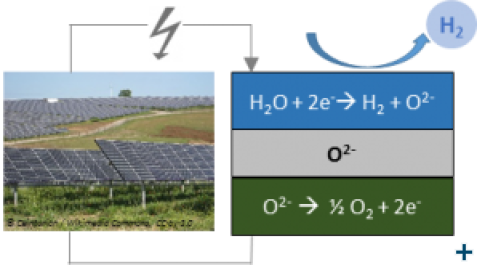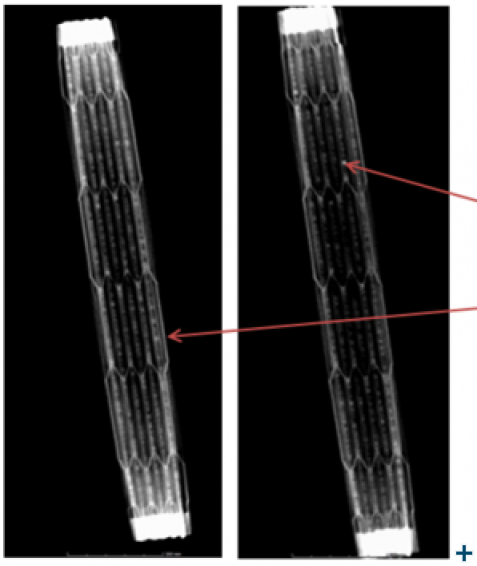MLZ is a cooperation between:
 > Technische Universität München
> Technische Universität München > Helmholtz-Zentrum Hereon
> Helmholtz-Zentrum Hereon
 > Forschungszentrum Jülich
> Forschungszentrum Jülich
MLZ is a member of:
 > LENS
> LENS > ERF-AISBL
> ERF-AISBL
MLZ on social media:

MLZ (eng)
Lichtenbergstr.1
85748 Garching
07.02.2017
Danish company uses neutrons to test electrolysis cells

Electricity from renewable sources (such as solar energy) is used by SOECs to produce hydrogen (H2). The hydrogen can then be stored for later use as a fuel. © (left image) Ceinturion / Wikimedia Commons
The Danish company Haldor Topsøe got thanks to the EU project SINE 2020 at ANTARES interesting radiographies of its electrolysis cells.
Haldor Topsøe is specialized in the development and manufacture of catalysts and the design of process plants for the chemical and petrochemical industries.
The production of hydrogen is important as it is a clean fuel and easy to store. In this view, Haldor Topsøe is developing solid oxide electrolysis cells (SOECs) for hydrogen production. SOECs are a rather competitive solution for small scale hydrogen production.
The stacks available in the market may suffer from a performance loss when used over prolonged periods of time. This is due to the physical stress that may weaken the connection between individual layers of a stack.

The experiment revealed interesting features that HALDOR-TOPSØE had not considered before seeing the results of neutron imaging. The arrows indicate the inhomogeneities identified within the stack. © FRM II / TUM
After consultation, the SINE2020 Industry Coordinators advised the team from Haldor Topsøe to use neutron imaging at the Maier-Leibnitz Zentrum (MLZ) in Germany. Neutron imaging is the most appropriate technique for this case, as it is able to penetrate centimetres of metal without damaging it, and it can “see” hydrogenated materials.
Haldor Topsøe performed neutron radiography and tomography investigations at MLZ for free, through the SINE2020 Industry Activities. The researchers were able to identify hitherto unknown features within the stack.
Christoffer Tyrsted, who is Research Scientist at Haldor Topsøe, stated:
“All the way through we received good and competent feedback from the parties. […] The experiments revealed other interesting features we had not considered before obtaining the data.”
Dr. Michael Schulz, scientist at the radiography station ANTARES at MLZ says: „The test radiographies were also positive for us, as there might be follow-up-measurements.” There are more companies interested in the free test measurements in the frame of SINE 2020, asking for the neutron radiography possibilities, says Schulz.
More information
Free test measurements for industry in the EU project SINE 2020
MLZ is a cooperation between:
 > Technische Universität München
> Technische Universität München > Helmholtz-Zentrum Hereon
> Helmholtz-Zentrum Hereon
 > Forschungszentrum Jülich
> Forschungszentrum Jülich
MLZ is a member of:
 > LENS
> LENS > ERF-AISBL
> ERF-AISBL
MLZ on social media:


